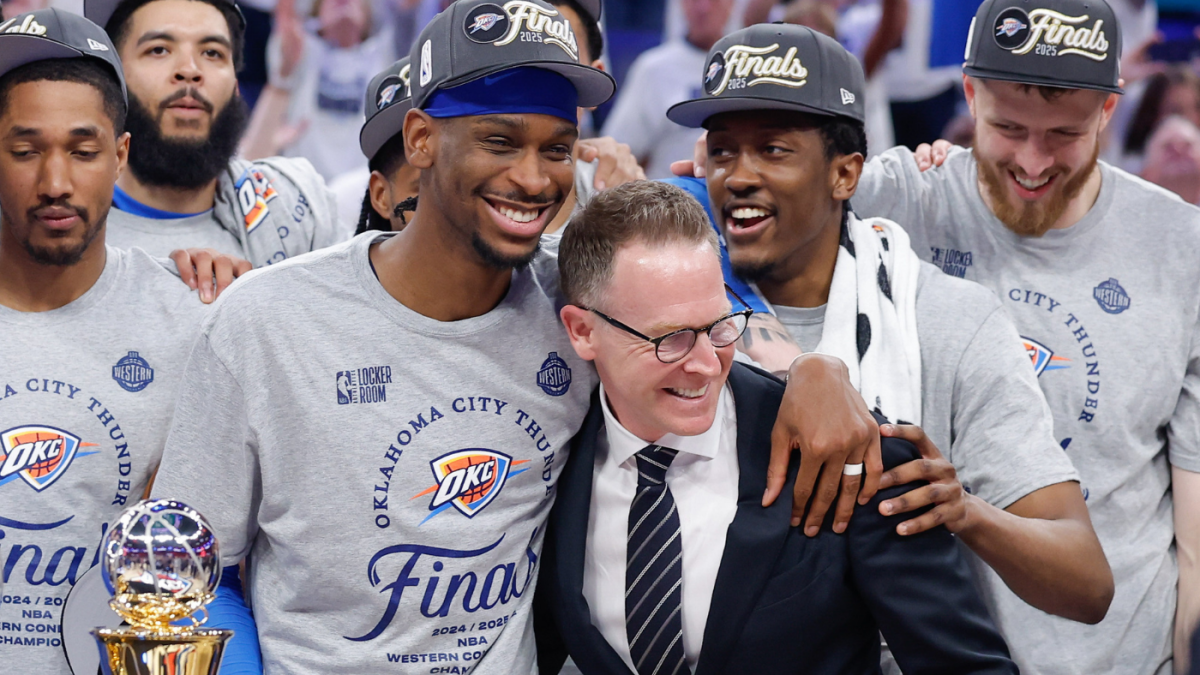The NBA has long been a league where athleticism and intensity define the game, but in recent years, the physical toll on players has become increasingly apparent. Sam Presti, the general manager of the Oklahoma City Thunder, has been a vocal advocate for addressing the growing concerns surrounding player injuries. His insights shed light on the evolving nature of the game, the severity of specific injuries, and the broader implications for the league. Presti’s perspective is particularly valuable given his experience in managing high-profile talent and his commitment to player well-being.
The modern NBA is more physically demanding than ever before. According to Presti, “playing one NBA game today is almost like playing two a decade ago.” This statement underscores the escalating intensity of the game, where players are required to cover more ground, engage in more high-impact plays, and endure compressed schedules with minimal rest. The data supports this observation. Player tracking technology reveals that athletes are running faster, jumping higher, and engaging in more physical contact than in previous eras. The league’s compressed schedule, which includes frequent back-to-back games and extensive travel, exacerbates the problem. Cumulative fatigue and overuse injuries have become common, leading to a higher incidence of serious injuries that can derail careers.
One of the most concerning trends in NBA injuries is the rise in Achilles tendon ruptures. Presti has been particularly vocal about the severity of these injuries, noting that excluding Kevin Durant—who made a remarkable comeback—very few players return to their pre-injury performance levels after suffering an Achilles rupture. His candid remarks highlight the need for a more realistic understanding of the long-term impact of such injuries. The Achilles tendon is crucial for explosive movements, and its rupture often requires extensive rehabilitation. Presti’s perspective challenges the notion that these injuries are merely part of the game, emphasizing instead the need for proactive measures to prevent them. His stance is not about assigning blame but about fostering a culture of awareness and responsibility within the league.
The implications of the injury crisis extend beyond individual players and teams. For general managers like Presti, balancing short-term success with long-term player health is a delicate act. The Thunder’s front office has been praised for its ability to develop talent, but Presti’s comments reflect a broader concern about the sustainability of player careers. The NBA’s structure—including scheduling, recovery protocols, and workload management—must be reevaluated to mitigate injury risks. Presti’s remarks serve as a call to action for league officials, medical professionals, and team executives to collaborate on solutions that prioritize player well-being. Ignoring these issues is no longer an option, as the physical demands of the game continue to rise.
Effective management of injury risks requires a multifaceted approach. Presti’s experience in drafting and developing MVP-caliber players like Kevin Durant, Russell Westbrook, and James Harden has given him unique insights into the challenges players face. His approach to player management emphasizes the importance of recognizing signs of fatigue, advocating for rest, and utilizing medical advances in prevention and rehabilitation. Front offices must view player health as integral to team success, not just a medical issue. This shift in perspective is crucial for fostering a culture where player well-being is prioritized alongside competitive success.
Addressing the injury problem will require structural changes at both the team and league levels. Several potential solutions could be explored to mitigate injury risks. First, revising the scheduling system to limit back-to-back games and reduce travel burdens could provide players with better recovery windows. Second, implementing standardized health monitoring and recovery practices across all teams would ensure consistency in player care. Third, investing in biomechanical and physiological research could help better understand the mechanisms behind injuries and develop more effective prevention strategies. Finally, educating players about the signs of overuse and the importance of preventive care would empower them to take an active role in their own health.
Sam Presti’s candid reflections on the state of NBA injuries highlight a pressing issue that affects players, teams, and fans alike. The increasing intensity of gameplay, exemplified by how physically demanding each game has become compared to a decade ago, demands a reevaluation of how the league supports its athletes. Acknowledging the severity of injuries such as Achilles ruptures is not about pointing fingers but about fostering an environment where the physical and mental well-being of players is paramount. As the NBA continues to evolve as a global sports powerhouse, confronting these challenges head-on will be key to sustaining the sport’s competitive integrity and the well-being of those who play it. Presti’s perspective offers a vital lens for stakeholders aiming to balance excellence on the court with responsible stewardship of athlete health.











